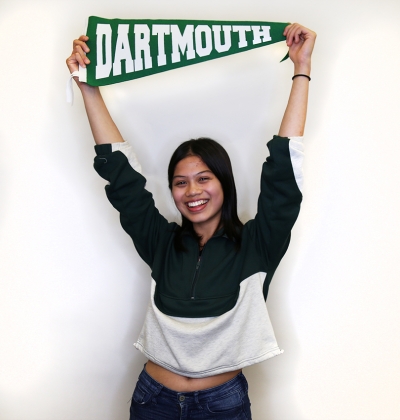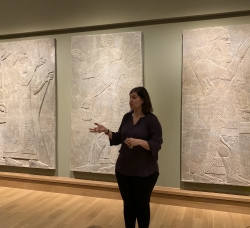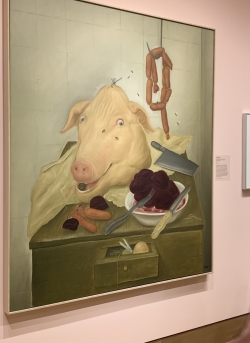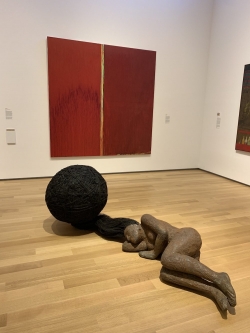

Diana D'Souza

You are here

A Walk in The Hood
Clustered between the Hop and Wilson Hall, you will find the Hood Museum of Art, home to some of the most impressive Native American and Australian indigenous art. Although I had frequently passed the Hood during my late night food dashes, I never stepped foot inside until my Humanities floor joined Professor Timothy Baker '08 and Associate Curator Amelia Kahl '01 for a tour.

Our tour was divided into two parts, the first of which was a guided tour, where Amelia spoke about the history of the artwork and answered questions. We began by entering the landscape exhibit and I vividly remember a painting reminiscent of the Lorax—with puffy, cotton candy-like trees, a pink sky, and a spattering of flowers in rolling green grass. Next, we proceeded to look at Native American art (baskets, wallets, and pottery) before entering my favorite exhibit: The Politics of Pink. This exhibit, which was designed by Charlotte Grussing '19, embraced how women are stereotypically associated with the color pink. By drowning the exhibit in pink and showcasing the works of women, she was successful in proving that women can reclaim the color pink.

The second part of the tour took us upstairs, where we had ten minutes to explore as much as we could before the tour concluded. As I admired masks, sculptures, and expansive paintings, I found myself drawn to Allison Saar's "Cache," the focal point of the room. The sculpture features a naked woman curled on the floor with a massive ball of hair weighing her down. Kahl mentioned that it was a symbolic piece that spoke to the woman's struggle of being of both African and European ancestry.

At the end of the tour, we broke out into a Q&A session. Kahl informed us that Dartmouth owns over 150,000 pieces of art, but only 1.5-2% of them are showcased at a time. Every term, the Hood attempts to update or replace exhibits in order to keep the novelty of the museum alive. Besides stopping by for a quick stroll, she encouraged us to conduct research in the museum as an intern, to design our own exhibits, or to request to study an artifact for class. Being able to engage with the Hood staff while discussing beautiful yet intriguing pieces of art made me better appreciate the value Dartmouth places in the humanities.
Posts You Might Like

A peek into the best space on campus (in my very biased opinion)


Read about my experience on a four-hour retreat offered through a collaboration between five departments and institutions!


The Callbacks is a no-auction, no-cut musical cabaret club! Join me as I recount my experience performing in my first show!


Librarians are the best people to chat with about books: they love books as much as I do, but they know so much more!


Studying at Dartmouth is never limited to the four walls of the classroom!


I have really enjoyed pushing myself to really learn and grow in my Winter Term classes! Join me as I talk about which classes I am in right now.


A key part of my Dartmouth experience so far has been my time on Sheba, one of many dance groups on campus! Read on to learn more about dance on campus!


Shining the spotlight on one of my favorite student organizations!


Nestled on campus, the Hood Museum of Art is a space for learning, insightful reflections, and more!
